Casual Trail and Yanayacu-Pucate Rivers, Upper Amazon
 Our trip in the Upper Amazon has just begun! We are very excited as we just had a great day exploring several creeks and hiking some of the only available grounds of the region. We are in the process of discovering what this area is all about, what it means to the world and to the local people that inhabit the river villages. It is a very different world “out there” and we just had a taste of it!
Our trip in the Upper Amazon has just begun! We are very excited as we just had a great day exploring several creeks and hiking some of the only available grounds of the region. We are in the process of discovering what this area is all about, what it means to the world and to the local people that inhabit the river villages. It is a very different world “out there” and we just had a taste of it!
To begin the day, we had an early morning wake up “knock,” which means a very gentle “good morning” through our doors. After enjoying some freshly brewed coffee, we boarded our skiffs for our first exploration. It turns out that skiffs are the best way to explore the Amazon River and its tributaries. The sturdy metal out-layer of the skiffs negotiates really well through the constant organic debris coming down from the river. The sturdy-looking exterior doesn’t compromise the comfort of the interior, which provides a comfy seating area with plenty of room for all of our gear. I must admit that exploring the river with unobstructed views is the best! This combined with the drivers’ skills to navigate the narrow creeks and to be able to offer great views to everyone, regardless of where they are sitting, was part of the experience as well.
Our first stop was a creek known as “Pahuachiro.” The names of most of the areas are either Quichua language-origin or simply named due a geographical mark, or a nearby town.
 Regardless of the name, this location proved to be a great place to begin our trip. Several species of colorful birds were observed during our visit, and the naturalists on board each of the skiffs unveiled the wildlife for us. Their expertly trained eyes spotted many more things than we did, and their ability to make bird calls was commendable!
Regardless of the name, this location proved to be a great place to begin our trip. Several species of colorful birds were observed during our visit, and the naturalists on board each of the skiffs unveiled the wildlife for us. Their expertly trained eyes spotted many more things than we did, and their ability to make bird calls was commendable!
After breakfast, we headed to our first hike at Casual trail. As we strolled into the forest, we observed that the daylight didn’t penetrate through the canopy foliage as much anymore. A humid and darkish environment was surrounding us, and although alien to us, it was normal to the inhabitants of the forest. This time we not only had the naturalists to interpret our surroundings but a group of local people from the nearby town who joined us and kept bringing forest animals to us; it was the best!
We then continued our ship’s navigation up the Marañon River and to the headwaters of the Yanayacu-Pucate Rivers. These last two are smaller, yet important, tributaries for the main Marañon river system, which later dumps its waters into the Amazon River itself. The Yanayacu-Pucate are both black water river systems, which are favorite hang-outs for pink river dolphins. We observed them from the ship and later on from the skiffs, although I only have blurry pictures to prove it!
 I am not too worried about the blurry pictures; during the afternoon skiff ride, we were all able to take much better images of the animals and scenery due the freshly gained-skills acquired during our first photo presentation of the trip. Our photo instructor, Jose Guerrero, gave us all great tips for photographing this region, and indeed made a difference in our afternoon photography!
I am not too worried about the blurry pictures; during the afternoon skiff ride, we were all able to take much better images of the animals and scenery due the freshly gained-skills acquired during our first photo presentation of the trip. Our photo instructor, Jose Guerrero, gave us all great tips for photographing this region, and indeed made a difference in our afternoon photography!
It takes a lot of skills to photograph in low light and an almost monochromatic environment. This, added to the fact that animals move and could be perched far away, makes for a challenging experience. Luckily having the experience of one on one photo instruction makes you want to meet the challenge, and it is one of the perks that we offer on all of our voyages.
After a great afternoon experience and a wonderful sunset, we were ready for cocktails and a delicious regional dinner cooked by some of the most experienced chefs of the Amazon!
Marañon River: Amazonas Natural Park & Piraña Caño
 The Marañon river is one of the most important tributaries to the great Amazon river. Today we visited an area known as Amazonas Natural Park, a private reserve with a system of seven interconnected suspended bridges over the canopy. This was our longest walk of the week, which gave us the chance to experience the canopy but also to find saddle back tamarins, plus some interesting insects and several species of birds. We had a delicious lunch with local ingredients, and later on our guests had the opportunity to attend a presentation onboard about photography composition and storytelling. In the afternoon, we navigated to Piraña Caño. This is an incredible area with narrow streams run through the flooded forest, where we spotted various species of monkeys and birds. The best part of the day still awaited us: on our way back, thousands of parakeets and caciques arrived to a small island, and we were able to stop to enjoy this unforgettable natural display.
The Marañon river is one of the most important tributaries to the great Amazon river. Today we visited an area known as Amazonas Natural Park, a private reserve with a system of seven interconnected suspended bridges over the canopy. This was our longest walk of the week, which gave us the chance to experience the canopy but also to find saddle back tamarins, plus some interesting insects and several species of birds. We had a delicious lunch with local ingredients, and later on our guests had the opportunity to attend a presentation onboard about photography composition and storytelling. In the afternoon, we navigated to Piraña Caño. This is an incredible area with narrow streams run through the flooded forest, where we spotted various species of monkeys and birds. The best part of the day still awaited us: on our way back, thousands of parakeets and caciques arrived to a small island, and we were able to stop to enjoy this unforgettable natural display.
The day was still not over! After our return to the ship, our wonderful bartenders gave us a demonstrative class on how to prepare Pisco Sour, a traditional Peruvian drink. Cheers to more exciting days to come on our Amazon adventure!
Marañon River: San Jorge Community & Nauta Caño
 Today was one of those days when the unexpected happened, and we ended up in a different location than we intended to be when we started our day. However, this is the way all expeditions should be, as a true adventure could never be fully predicted!
Today was one of those days when the unexpected happened, and we ended up in a different location than we intended to be when we started our day. However, this is the way all expeditions should be, as a true adventure could never be fully predicted!
Our morning was quite interesting, as we visited one of the remote villages that we rarely get to go during our trips. The community of San Jorge is located at the center section of the Marañon River and has approximately 300 inhabitants. It has a school and a little basic grocery owned by one of the locals. The most important structures of all, in any of these villages, are of course a church, and comparable in importance, a soccer (football) field for entertainment.
Our guests had the opportunity to stroll along the village’s cemented-walkways and learn about the simple life of the people from this region. There are no cars in the community, and the cell phone range is analog, which means no internet! Electricity is also expensive, as it is not yet provided by the government, but rather supplied by their own local gasoline-based generator. This generator is only turned-on three times a week and only for three hours at the time. This time is used for people to recharge their phones and to catch up with a bit of local signal TV time in one of the lucky houses that has a TV set.
 As we strolled, we were greeted by the locals with smiles and invitations to enter their humble houses. Not much was inside, but the houses are filled with pride, as food and shelter are never absent in any of the houses within the community. We were all so engaged in the village experience that we ended up staying longer than we had intended; luckily this region is full of great alternatives and we quickly modified the program to have a second, but equally great, alternative for the afternoon.
As we strolled, we were greeted by the locals with smiles and invitations to enter their humble houses. Not much was inside, but the houses are filled with pride, as food and shelter are never absent in any of the houses within the community. We were all so engaged in the village experience that we ended up staying longer than we had intended; luckily this region is full of great alternatives and we quickly modified the program to have a second, but equally great, alternative for the afternoon.
Destiny proved to be in our side as we ended up having a great afternoon outing, with kayaking, SUP (Stand Up Paddling) and skiff rides in a place known as Nauta Creek. As we navigated on the skiff towards our kayaking location, we came to a sudden stop as we spotted the “holy grail” of the birds when it comes to birdwatching in the Amazon…Harpy eagle!
 For the past seven years I have been coming to the Amazon to lead expeditions, and I have always been hopeful that one day I will be granted the opportunity to see this gorgeous bird. The last time it was sighted by any of the naturalists on board was a year ago, flying far in the distance. Today the sight was as good as it can get! Perched on a nearby tree branch, the harpy eagle turned its head several times, showing curiosity as it tried to figure out what we were. We don’t look anything like its favorite prey, which are sloths perched on trees, so after allowing us to take several hundred pictures, it took off. Although there were records of its existence in the reserve, there is not much more information regarding any of its nesting grounds or its general ecology in this region.
For the past seven years I have been coming to the Amazon to lead expeditions, and I have always been hopeful that one day I will be granted the opportunity to see this gorgeous bird. The last time it was sighted by any of the naturalists on board was a year ago, flying far in the distance. Today the sight was as good as it can get! Perched on a nearby tree branch, the harpy eagle turned its head several times, showing curiosity as it tried to figure out what we were. We don’t look anything like its favorite prey, which are sloths perched on trees, so after allowing us to take several hundred pictures, it took off. Although there were records of its existence in the reserve, there is not much more information regarding any of its nesting grounds or its general ecology in this region.
Everything that we saw and did today was terrific, but there is nothing that compares to the feeling of seeing such a magnificent animal perched only feet away from us! Cheers to the harpy eagle!
Ucayali River: Belluda Caño and El Dorado River
 Today we explored the Ucayali River, one of the largest tributaries of the Amazon. Here, our skiffs meandered along various narrowing stretches of black waters in the wilderness of the Pacaya – Samiria Reserve. Early in the morning, our target was to find macaws, and we did! Several flocks of blue and yellow macaws flew by, at a close distance. After breakfast, we sailed to Belluda Caño, where we found more groups of macaws, together with kingfishers, jacamars, trogons, toucans, caciques and oropendolas. Squirrel monkeys, as always, put on their own show for us. We came back onboard for lunch and later on we had a presentation about the cultural diversity of the Amazon.
Today we explored the Ucayali River, one of the largest tributaries of the Amazon. Here, our skiffs meandered along various narrowing stretches of black waters in the wilderness of the Pacaya – Samiria Reserve. Early in the morning, our target was to find macaws, and we did! Several flocks of blue and yellow macaws flew by, at a close distance. After breakfast, we sailed to Belluda Caño, where we found more groups of macaws, together with kingfishers, jacamars, trogons, toucans, caciques and oropendolas. Squirrel monkeys, as always, put on their own show for us. We came back onboard for lunch and later on we had a presentation about the cultural diversity of the Amazon.
Late in the afternoon, we had an evening exploration along el Dorado River, with the objective of experiencing the colors and sounds of the rainforest as the night arrived. With a big reflecting light, our naturalist spotted several caimans. After a wonderful sunset, the magical colors of the golden hour remain in our memories, there is camaraderie brewing and it is time for a Pisco sour to end another wonderful day onboard the Delfin II.
Pacaya River and Magdalena Creek
 Today we were exploring one of the gems of the Pacaya-Samiria Reserve, the Pacaya River section. This is a location far away from communities and any extraction activity, so the wildlife is abundant and the landscape is very unique. This area is also known as the mirrored jungle, as the reflections of the forest over the black waters of the Pacaya River makes for spectacular scenery.
Today we were exploring one of the gems of the Pacaya-Samiria Reserve, the Pacaya River section. This is a location far away from communities and any extraction activity, so the wildlife is abundant and the landscape is very unique. This area is also known as the mirrored jungle, as the reflections of the forest over the black waters of the Pacaya River makes for spectacular scenery.
Our morning started early with a bit of a twist on the normal skiff rides activities. We headed out before breakfast for a journey that took us all morning. However, half-way through we stopped for breakfast! We brought sandwiches, coffee, fruits, and juices. All were served while on board the skiff enjoying the natural beauty of an unspoiled forest!
We then continued to the Yanayacu Lagoon, where the clearer waters provided us with the opportunity of a nice and safe swimming experience in the Amazon region. We didn’t have to push our guests to jump into the warm and refreshing lagoon, but the hard part came when we had to get out to continue our exploration. It felt so good to swim and float knowing that we were surrounded by pink river dolphins!

The journey back was just as exciting as the earlier trip, as we had to go throughout an entanglement of vegetation accumulated by the force of the river. Our skilled drivers got us through, although it was not easy to find the proper channels which closed rapidly behind us, as if we were never there.
Having completed a successful morning, we continued our ship’s navigation heading down river. We reached a location known as Magdalena Creek, and it was a great visit! This time we had the chance to deploy our kayaks once again for some of our guests to enjoy the wonderful feeling of kayaking in the Upper Amazon. The skiffs were also exploring the intricate ecosystem of many hidden smaller creeks and it was fantastic to continue to add new species of birds to our already long list.
Finally, the last sunrays were telling us to return to our mother ship, which we did reluctantly!
Supay, Iricahua & Yarapa River
 This is our last day of the expedition, and for me, the last day after immersing myself for three weeks in the Peruvian Upper Amazon. For any keen naturalist, birder, or enthusiastic photographer, the Amazon rainforest is the ultimate location. During this week, we have seen beautiful animals and been spoiled with the many opportunities to get wonderful shots, and today was no exception.
This is our last day of the expedition, and for me, the last day after immersing myself for three weeks in the Peruvian Upper Amazon. For any keen naturalist, birder, or enthusiastic photographer, the Amazon rainforest is the ultimate location. During this week, we have seen beautiful animals and been spoiled with the many opportunities to get wonderful shots, and today was no exception.
 We started our day with a visit to Supay. We had the choice to explore this area by kayak, paddle boarding, or an enjoyable skiff ride. No matter what option we took, a gorgeous landscape and unique wildlife were there, ready to surprise us. Later on, we explored another area called Iricahua, a great place for birding.
We started our day with a visit to Supay. We had the choice to explore this area by kayak, paddle boarding, or an enjoyable skiff ride. No matter what option we took, a gorgeous landscape and unique wildlife were there, ready to surprise us. Later on, we explored another area called Iricahua, a great place for birding.
In the afternoon, we had our last opportunity to visit a village and buy some local handcrafts. We ended this outing discovering a new species of monkey that inhabit the Yarapa River: the wooly monkey. Enjoying these interesting and curious monkeys was the perfect ending to a wonderful week.
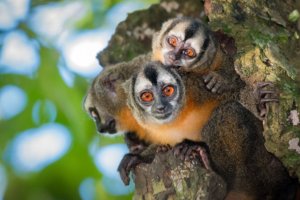
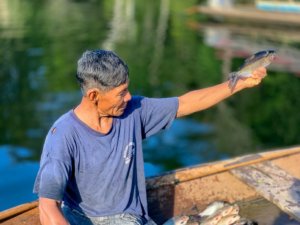
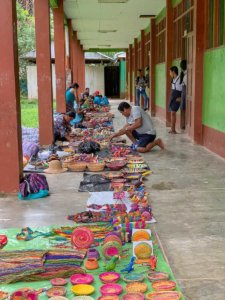
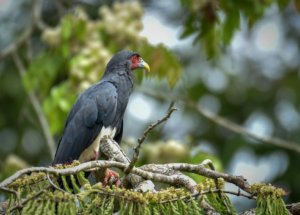
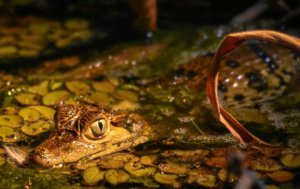
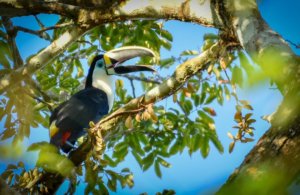
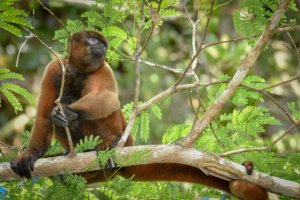

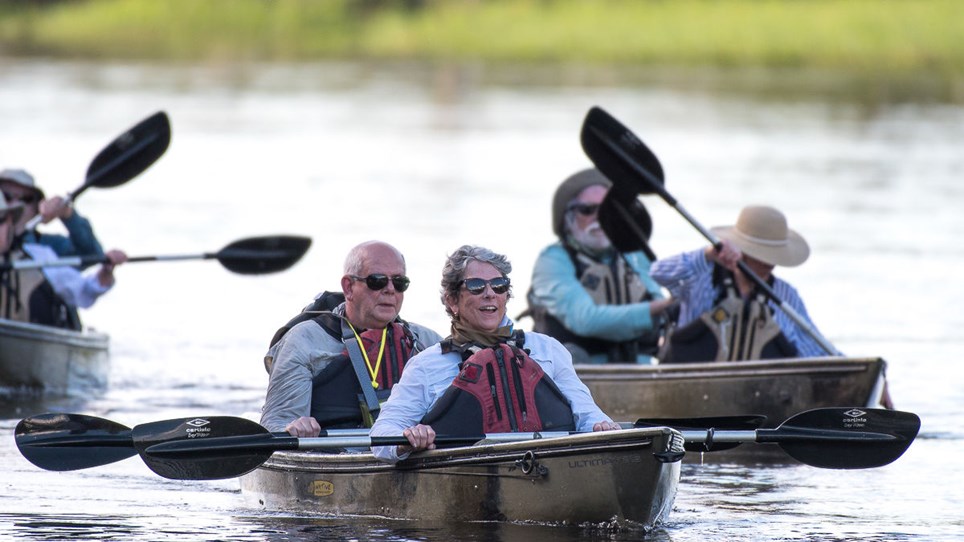
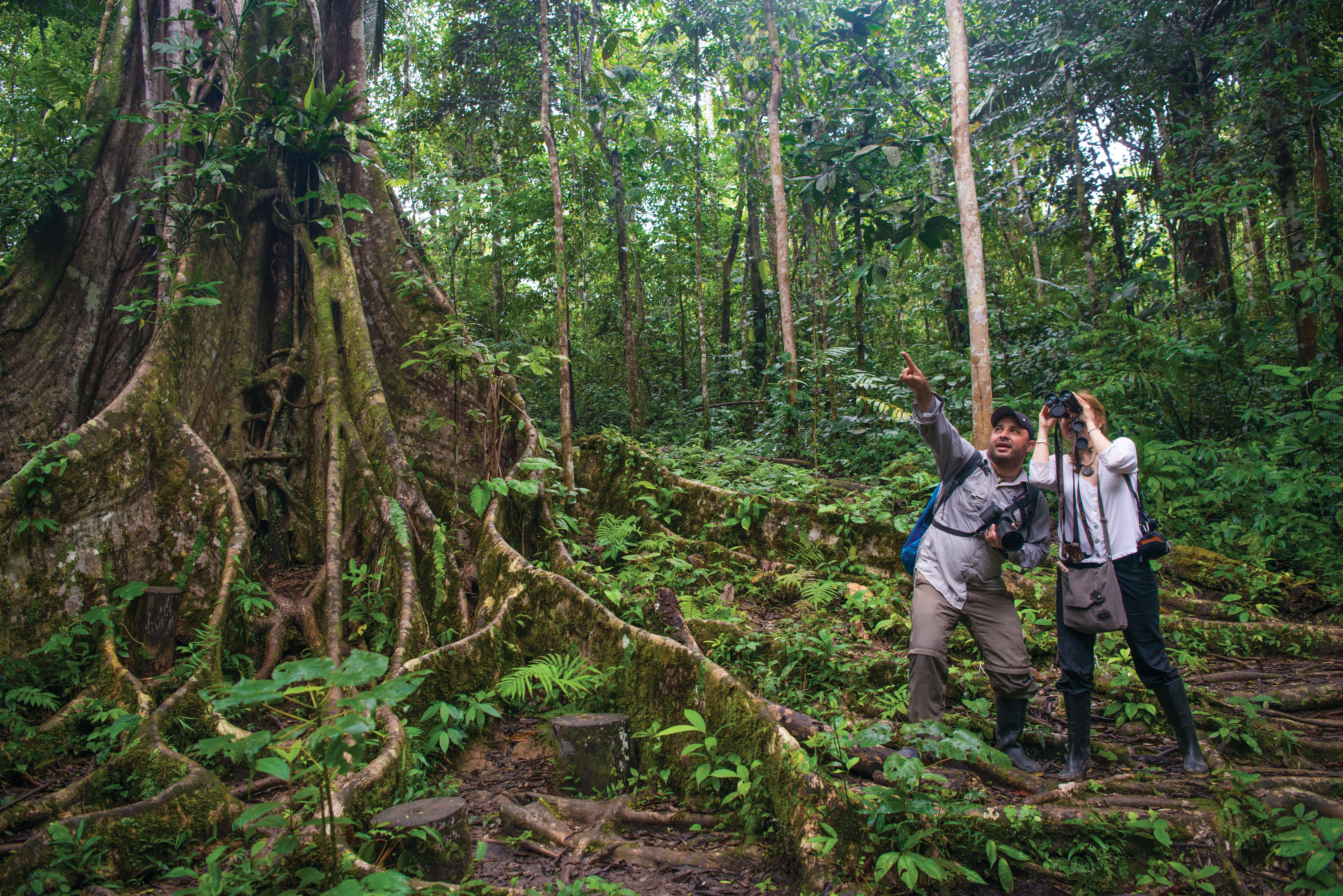
 Our trip in the Upper Amazon has just begun! We are very excited as we just had a great day exploring several creeks and hiking some of the only available grounds of the region. We are in the process of discovering what this area is all about, what it means to the world and to the local people that inhabit the river villages. It is a very different world “out there” and we just had a taste of it!
Our trip in the Upper Amazon has just begun! We are very excited as we just had a great day exploring several creeks and hiking some of the only available grounds of the region. We are in the process of discovering what this area is all about, what it means to the world and to the local people that inhabit the river villages. It is a very different world “out there” and we just had a taste of it! Regardless of the name, this location proved to be a great place to begin our trip. Several species of colorful birds were observed during our visit, and the naturalists on board each of the skiffs unveiled the wildlife for us. Their expertly trained eyes spotted many more things than we did, and their ability to make bird calls was commendable!
Regardless of the name, this location proved to be a great place to begin our trip. Several species of colorful birds were observed during our visit, and the naturalists on board each of the skiffs unveiled the wildlife for us. Their expertly trained eyes spotted many more things than we did, and their ability to make bird calls was commendable! I am not too worried about the blurry pictures; during the afternoon skiff ride, we were all able to take much better images of the animals and scenery due the freshly gained-skills acquired during our first photo presentation of the trip. Our photo instructor, Jose Guerrero, gave us all great tips for photographing this region, and indeed made a difference in our afternoon photography!
I am not too worried about the blurry pictures; during the afternoon skiff ride, we were all able to take much better images of the animals and scenery due the freshly gained-skills acquired during our first photo presentation of the trip. Our photo instructor, Jose Guerrero, gave us all great tips for photographing this region, and indeed made a difference in our afternoon photography! The Marañon river is one of the most important tributaries to the great Amazon river. Today we visited an area known as Amazonas Natural Park, a private reserve with a system of seven interconnected suspended bridges over the canopy. This was our longest walk of the week, which gave us the chance to experience the canopy but also to find saddle back tamarins, plus some interesting insects and several species of birds. We had a delicious lunch with local ingredients, and later on our guests had the opportunity to attend a presentation onboard about photography composition and storytelling. In the afternoon, we navigated to Piraña Caño. This is an incredible area with narrow streams run through the flooded forest, where we spotted various species of monkeys and birds. The best part of the day still awaited us: on our way back, thousands of parakeets and caciques arrived to a small island, and we were able to stop to enjoy this unforgettable natural display.
The Marañon river is one of the most important tributaries to the great Amazon river. Today we visited an area known as Amazonas Natural Park, a private reserve with a system of seven interconnected suspended bridges over the canopy. This was our longest walk of the week, which gave us the chance to experience the canopy but also to find saddle back tamarins, plus some interesting insects and several species of birds. We had a delicious lunch with local ingredients, and later on our guests had the opportunity to attend a presentation onboard about photography composition and storytelling. In the afternoon, we navigated to Piraña Caño. This is an incredible area with narrow streams run through the flooded forest, where we spotted various species of monkeys and birds. The best part of the day still awaited us: on our way back, thousands of parakeets and caciques arrived to a small island, and we were able to stop to enjoy this unforgettable natural display. Today was one of those days when the unexpected happened, and we ended up in a different location than we intended to be when we started our day. However, this is the way all expeditions should be, as a true adventure could never be fully predicted!
Today was one of those days when the unexpected happened, and we ended up in a different location than we intended to be when we started our day. However, this is the way all expeditions should be, as a true adventure could never be fully predicted!
 As we strolled, we were greeted by the locals with smiles and invitations to enter their humble houses. Not much was inside, but the houses are filled with pride, as food and shelter are never absent in any of the houses within the community. We were all so engaged in the village experience that we ended up staying longer than we had intended; luckily this region is full of great alternatives and we quickly modified the program to have a second, but equally great, alternative for the afternoon.
As we strolled, we were greeted by the locals with smiles and invitations to enter their humble houses. Not much was inside, but the houses are filled with pride, as food and shelter are never absent in any of the houses within the community. We were all so engaged in the village experience that we ended up staying longer than we had intended; luckily this region is full of great alternatives and we quickly modified the program to have a second, but equally great, alternative for the afternoon. For the past seven years I have been coming to the Amazon to lead expeditions, and I have always been hopeful that one day I will be granted the opportunity to see this gorgeous bird. The last time it was sighted by any of the naturalists on board was a year ago, flying far in the distance. Today the sight was as good as it can get! Perched on a nearby tree branch, the harpy eagle turned its head several times, showing curiosity as it tried to figure out what we were. We don’t look anything like its favorite prey, which are sloths perched on trees, so after allowing us to take several hundred pictures, it took off. Although there were records of its existence in the reserve, there is not much more information regarding any of its nesting grounds or its general ecology in this region.
For the past seven years I have been coming to the Amazon to lead expeditions, and I have always been hopeful that one day I will be granted the opportunity to see this gorgeous bird. The last time it was sighted by any of the naturalists on board was a year ago, flying far in the distance. Today the sight was as good as it can get! Perched on a nearby tree branch, the harpy eagle turned its head several times, showing curiosity as it tried to figure out what we were. We don’t look anything like its favorite prey, which are sloths perched on trees, so after allowing us to take several hundred pictures, it took off. Although there were records of its existence in the reserve, there is not much more information regarding any of its nesting grounds or its general ecology in this region. Today we explored the Ucayali River, one of the largest tributaries of the Amazon. Here, our skiffs meandered along various narrowing stretches of black waters in the wilderness of the Pacaya – Samiria Reserve. Early in the morning, our target was to find macaws, and we did! Several flocks of blue and yellow macaws flew by, at a close distance. After breakfast, we sailed to Belluda Caño, where we found more groups of macaws, together with kingfishers, jacamars, trogons, toucans, caciques and oropendolas. Squirrel monkeys, as always, put on their own show for us. We came back onboard for lunch and later on we had a presentation about the cultural diversity of the Amazon.
Today we explored the Ucayali River, one of the largest tributaries of the Amazon. Here, our skiffs meandered along various narrowing stretches of black waters in the wilderness of the Pacaya – Samiria Reserve. Early in the morning, our target was to find macaws, and we did! Several flocks of blue and yellow macaws flew by, at a close distance. After breakfast, we sailed to Belluda Caño, where we found more groups of macaws, together with kingfishers, jacamars, trogons, toucans, caciques and oropendolas. Squirrel monkeys, as always, put on their own show for us. We came back onboard for lunch and later on we had a presentation about the cultural diversity of the Amazon. Today we were exploring one of the gems of the Pacaya-Samiria Reserve, the Pacaya River section. This is a location far away from communities and any extraction activity, so the wildlife is abundant and the landscape is very unique. This area is also known as the mirrored jungle, as the reflections of the forest over the black waters of the Pacaya River makes for spectacular scenery.
Today we were exploring one of the gems of the Pacaya-Samiria Reserve, the Pacaya River section. This is a location far away from communities and any extraction activity, so the wildlife is abundant and the landscape is very unique. This area is also known as the mirrored jungle, as the reflections of the forest over the black waters of the Pacaya River makes for spectacular scenery.
 This is our last day of the expedition, and for me, the last day after immersing myself for three weeks in the Peruvian Upper Amazon. For any keen naturalist, birder, or enthusiastic photographer, the Amazon rainforest is the ultimate location. During this week, we have seen beautiful animals and been spoiled with the many opportunities to get wonderful shots, and today was no exception.
This is our last day of the expedition, and for me, the last day after immersing myself for three weeks in the Peruvian Upper Amazon. For any keen naturalist, birder, or enthusiastic photographer, the Amazon rainforest is the ultimate location. During this week, we have seen beautiful animals and been spoiled with the many opportunities to get wonderful shots, and today was no exception. We started our day with a visit to Supay. We had the choice to explore this area by kayak, paddle boarding, or an enjoyable skiff ride. No matter what option we took, a gorgeous landscape and unique wildlife were there, ready to surprise us. Later on, we explored another area called Iricahua, a great place for birding.
We started our day with a visit to Supay. We had the choice to explore this area by kayak, paddle boarding, or an enjoyable skiff ride. No matter what option we took, a gorgeous landscape and unique wildlife were there, ready to surprise us. Later on, we explored another area called Iricahua, a great place for birding.